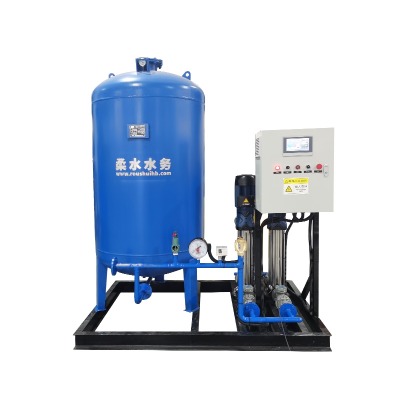Cat:RO Pure Water Systems
The pure water industrial RO water treatment system is an efficient and reliable water treatment equipment specially designed to meet the demand for p...
See DetailsRO System Introduction
Reverse osmosis is a highly precise membrane-based liquid separation technology that blocks almost all dissolved salts and organic matter with a molecular weight greater than 10C, allowing only water molecules to pass through. The desalination rate of reverse osmosis composite membranes is generally greater than 98%, and it is widely used in seawater and brackish water desalination, boiler feedwater, industrial pure water and electronic-grade ultrapure water preparation, drinking water preparation, and greywater recycling. Using reverse osmosis before ion exchange can significantly reduce operating costs and wastewater discharge.

Reverse osmosis separation principle
When equal volumes of a dilute solution and a concentrated solution are placed on opposite sides of a container, separated by a semi-permeable membrane, the solvent in the dilute solution will naturally pass through the membrane and flow towards the concentrated solution side. The liquid level on the concentrated solution side will be higher than that on the dilute solution side, creating a pressure difference and reaching osmotic equilibrium. This pressure difference is called osmotic pressure. If a pressure greater than the osmotic pressure is applied to the concentrated solution side, the solvent in the concentrated solution will flow towards the dilute solution. This flow of solvent is opposite to the original osmotic direction; this process is called reverse osmosis.
Composition of an RO Reverse Osmosis System
RO Equipment Performance
A bipolar RO reverse osmosis system is a pure water treatment unit that uses a combination of two-stage RO reverse osmosis membrane modules. The product water from the first-stage reverse osmosis membrane is used as raw water for a second reverse osmosis purification process. The conductivity of the product water is ≤0.5μS, and all indicators meet the requirements of the Chinese Pharmacopoeia 2000 edition. RO reverse osmosis mainly removes dissolved salts, organic matter, silica precipitates, macromolecules, and particulate matter not removed during pretreatment. The two-stage RO process effectively removes ions from the water, producing the high-purity water required by humans, while also ensuring that the effluent meets the influent requirements of industrial ultrapure water equipment, such as the influent requirements of subsequent EDI units.
Applications of RO (Reverse Osmosis):
Purification of pure water, distilled water, and water used in food and beverage preparation;
Preparation of pure and ultrapure water in the electronics, pharmaceutical, laboratory, and food industries;
Process engineering for separation, concentration, and liquid decolorization in the textile, chemical, and food industries;
Desalination of seawater and brackish water (converting seawater into freshwater to solve water shortage problems);
Domestic water use: for drinking, cooking, and preparing formula, etc.